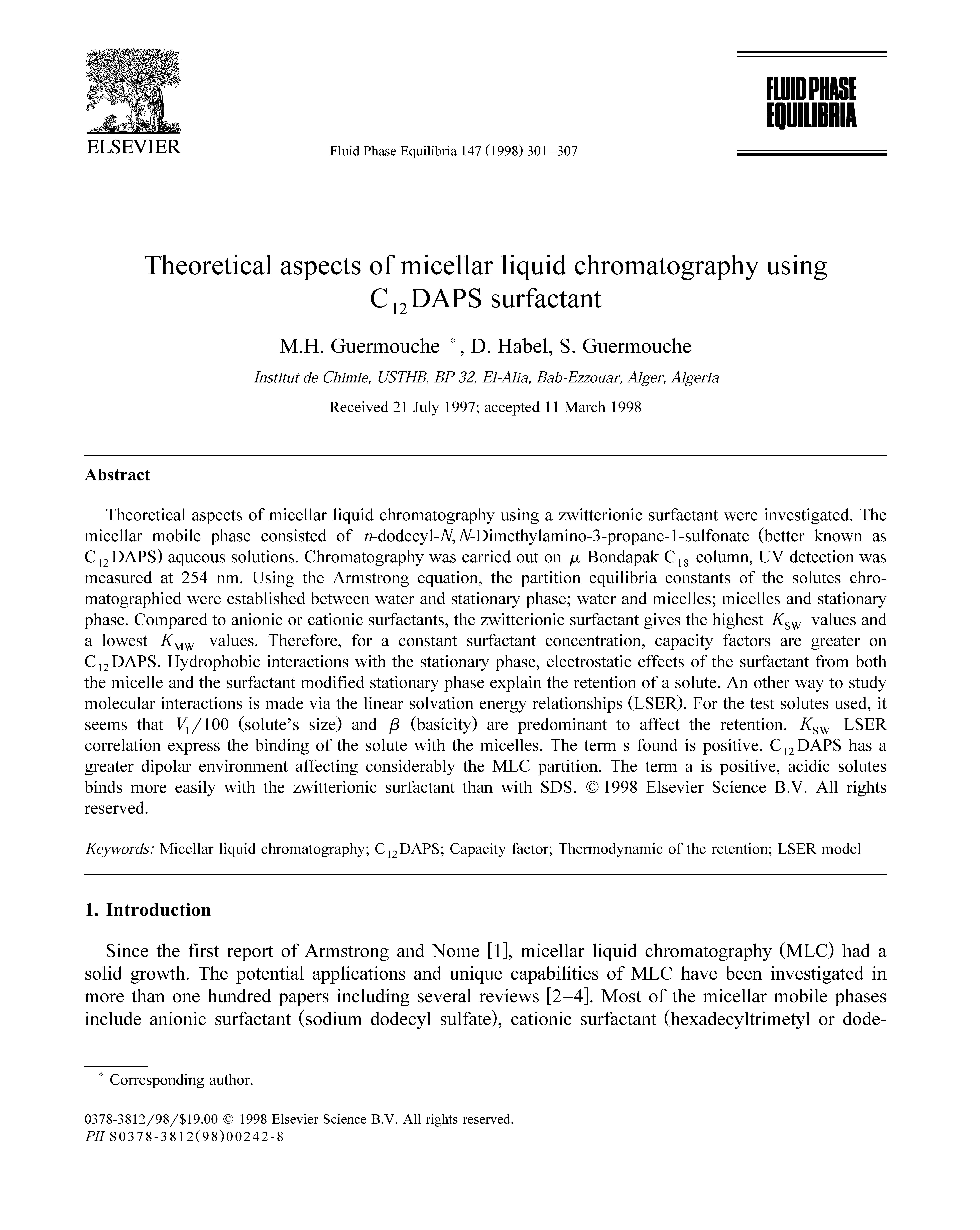Theoretical aspects of micellar liquid chromatography using C12DAPS surfactant
Article Ecrit par: Habel, D. ; Guermouche, S. ; Guermouche, M. H. ;
Résumé: Theoretical aspects of micellar liquid chromatography using a zwitterionic surfactant were investigated. The micellar mobile phase consisted of n-dodecyl-N,N-Dimethylamino-3-propane-1-sulfonate (better known as C12DAPS) aqueous solutions. Chromatography was carried out on [mu] Bondapak C18 column, UV detection was measured at 254 nm. Using the Armstrong equation, the partition equilibria constants of the solutes chromatographied were established between water and stationary phase; water and micelles; micelles and stationary phase. Compared to anionic or cationic surfactants, the zwitterionic surfactant gives the highest KSW values and a lowest KMW values. Therefore, for a constant surfactant concentration, capacity factors are greater on C12DAPS. Hydrophobic interactions with the stationary phase, electrostatic effects of the surfactant from both the micelle and the surfactant modified stationary phase explain the retention of a solute. An other way to study molecular interactions is made via the linear solvation energy relationships (LSER). For the test solutes used, it seems that V1/100 (solute's size) and [beta] (basicity) are predominant to affect the retention. KSW LSER correlation express the binding of the solute with the micelles. The term s found is positive. C12DAPS has a greater dipolar environment affecting considerably the MLC partition. The term a is positive, acidic solutes binds more easily with the zwitterionic surfactant than with SDS.
Langue:
Anglais
Thème
Chimie
Mots clés:
Micellar liquid chromatography
C12DAPS
Capacity factor
Thermodynamic of the retention
LSER model

